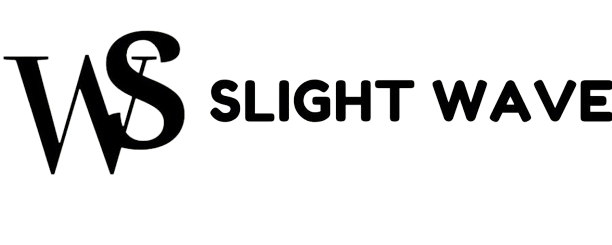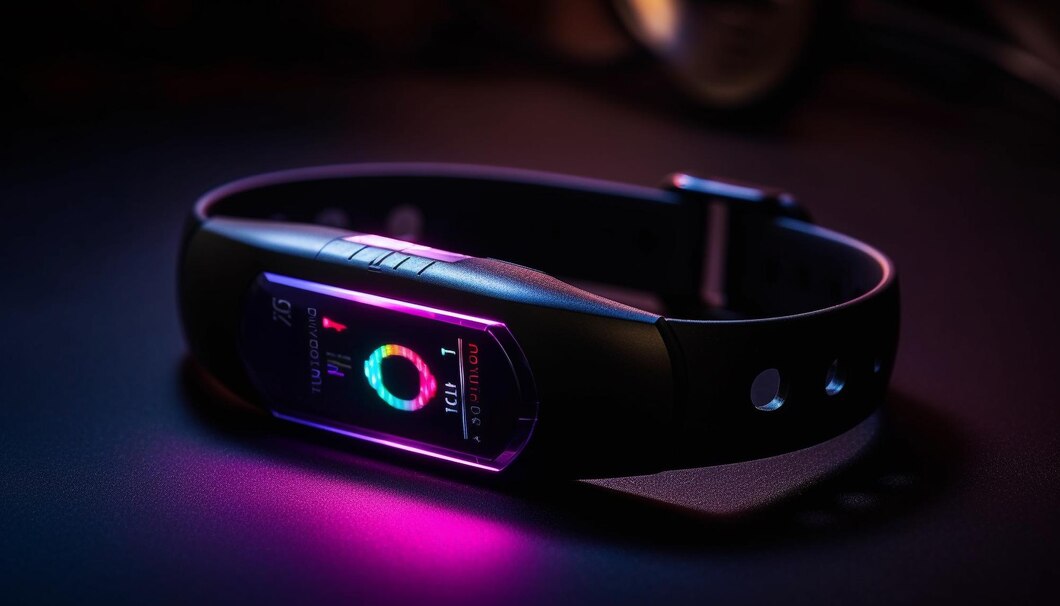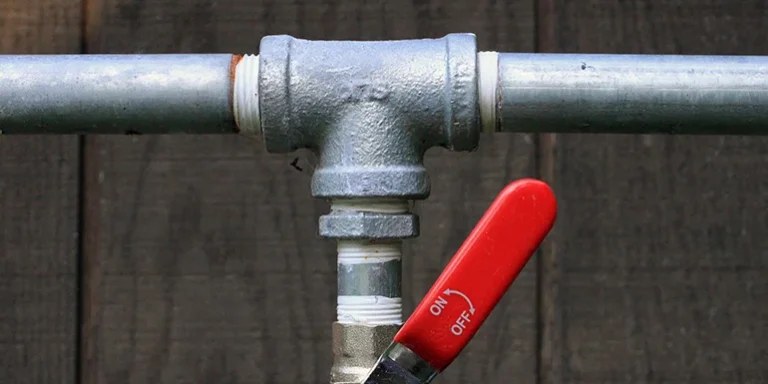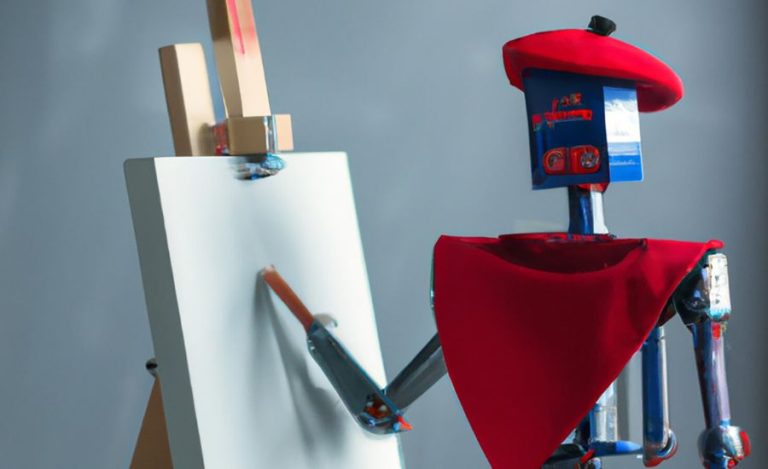Wearable Tech: The Next Generation of Personal Devices
As we delve into the ever-evolving world of technology, one segment that has been rapidly gaining attention and adoption is wearable tech. These innovative devices, designed to be worn on the body, are transforming the way we interact with technology and gather data about ourselves. From fitness trackers to smart watches, wearable tech has become an integral part of our daily lives, providing us with a seamless and personalized digital experience.
In this comprehensive article, we will explore the captivating world of wearable technology, tracing its evolution, examining the diverse types of devices, and uncovering the numerous benefits it offers across various industries. We’ll also address the challenges and concerns associated with this emerging field, and take a glimpse into the future trends and advancements that will shape the landscape of wearable tech.
Evolution of Wearable Tech
The concept of wearable technology is not entirely new; in fact, its origins can be traced back to the 1960s, when the first wearable computer was developed. However, it is in the past decade that wearable tech has truly come into its own, with a remarkable surge in innovation and consumer adoption.
The early wearable devices, such as calculator watches and personal audio players, were often bulky and lacked the seamless integration with our daily lives that we now expect. As technology advanced, wearable devices became more compact, versatile, and user-friendly, paving the way for the widespread acceptance and integration of these devices into our daily routines.
Today, wearable tech has evolved beyond mere novelty items, becoming sophisticated tools that seamlessly blend form and function. From monitoring our health and fitness to enhancing our productivity and entertainment experiences, wearable devices have become an indispensable part of our connected world.
Types of Wearable Devices
The wearable tech landscape is diverse, offering a wide array of devices to cater to various needs and preferences. Let’s explore some of the most prominent types of wearable devices:
- Fitness Trackers: These devices, such as Fitbit, Apple Watch, and Garmin, are designed to monitor and track our physical activity, heart rate, sleep patterns, and other health-related metrics. They empower us to take a more active role in our well-being and make informed decisions about our lifestyle choices.
- Smart Watches: Combining the functionality of a traditional watch with the capabilities of a smartphone, smart watches like the Apple Watch, Samsung Galaxy Watch, and Fossil Gen 6 allow us to stay connected, manage our schedules, and even control smart home devices, all from our wrists.
- Virtual Reality (VR) and Augmented Reality (AR) Headsets: These immersive devices, such as the Oculus Rift, HTC Vive, and Microsoft HoloLens, transport us to digital worlds or blend the virtual and physical realms, revolutionizing the way we experience entertainment, gaming, and even workplace collaboration.
- Smart Clothing and Accessories: Innovative apparel and accessories, such as smart shirts, jackets, and jewelry, are integrating technology into our everyday fashion choices, allowing us to monitor our vital signs, control our music, and even receive haptic feedback.
- Wearable Cameras: Devices like the GoPro and Snap Spectacles enable us to capture and share our experiences from a first-person perspective, providing a unique and engaging way to document our lives.
- Wearable Computers: These devices, which include smart glasses and even wearable computers like the Google Glass Enterprise Edition, offer hands-free access to information, communication, and task management, revolutionizing the way we interact with technology.
As the wearable tech industry continues to evolve, we can expect to see even more diverse and specialized devices emerge, catering to our ever-changing needs and preferences.
Benefits of Wearable Tech
The integration of wearable technology into our daily lives has brought about a myriad of benefits, transforming the way we live, work, and interact with the world around us. Here are some of the key advantages of embracing wearable tech:
- Improved Health and Fitness Monitoring: Wearable devices, such as fitness trackers and smart watches, provide us with real-time data on our physical activity, heart rate, sleep patterns, and other vital health metrics. This information empowers us to make more informed decisions about our well-being and take proactive steps to maintain a healthier lifestyle.
- Enhanced Productivity and Efficiency: Wearable tech, like smart watches and wearable computers, allows us to access information, manage tasks, and stay connected without the need to constantly reach for our smartphones. This seamless integration of technology into our daily routines can boost our productivity and efficiency, helping us to better manage our time and focus on the task at hand.
- Personalized Experiences: Wearable devices are designed to be highly personalized, adapting to our individual preferences and needs. From customizable watch faces to personalized fitness recommendations, these devices offer a tailored digital experience that enhances our overall satisfaction and engagement.
- Improved Safety and Accessibility: Certain wearable tech, such as medical alert devices and accessibility-focused accessories, can provide vital assistance in emergency situations or help individuals with disabilities navigate their environments more easily.
- Enhanced Entertainment and Immersion: Wearable devices, particularly VR and AR headsets, are revolutionizing the entertainment industry by offering immersive and engaging experiences that transport us to new digital realms or blend the virtual and physical worlds.
- Convenience and Connectivity: Wearable tech, like smart watches and fitness trackers, allow us to stay connected, access information, and control various aspects of our digital lives without the need to constantly reach for our smartphones. This seamless integration of technology into our daily routines enhances our overall convenience and connectivity.
As the wearable tech industry continues to evolve, we can expect to see even more innovative and transformative applications of these devices, further enhancing our personal and professional lives.
Impact of Wearable Tech on Various Industries
The influence of wearable technology extends far beyond the realm of personal use, as it has become a disruptive force in various industries, revolutionizing the way we approach and solve challenges. Let’s explore the impact of wearable tech across different sectors:
- Healthcare: Wearable devices, such as fitness trackers and smart watches, have become invaluable tools in the healthcare industry, enabling remote patient monitoring, early disease detection, and personalized treatment plans. These devices can collect and transmit real-time data on an individual’s health metrics, allowing healthcare providers to make more informed decisions and provide more proactive care.
- Fitness and Wellness: The rise of wearable fitness trackers has transformed the way we approach exercise and personal wellness. These devices provide detailed insights into our physical activity, calorie burn, sleep patterns, and more, empowering us to make more informed choices about our health and fitness goals.
- Sports and Athletics: Wearable tech has become indispensable in the world of sports, where athletes and coaches use these devices to monitor performance, track training progress, and optimize their training regimens. From smart jerseys that monitor heart rate to GPS-enabled running watches, wearable tech has become an essential tool for athletes and sports enthusiasts alike.
- Manufacturing and Industrial: In the industrial and manufacturing sectors, wearable devices are being used to enhance worker safety, improve productivity, and streamline operations. Augmented reality (AR) headsets, for instance, can provide workers with real-time information and hands-free access to critical data, reducing the risk of errors and improving overall efficiency.
- Retail and E-commerce: Wearable tech is transforming the retail and e-commerce industries, enabling personalized shopping experiences, enhanced customer engagement, and improved inventory management. From smart mirrors that provide personalized clothing recommendations to wearable devices that track customer behavior in-store, these technologies are revolutionizing the way we shop and interact with brands.
- Transportation and Logistics: Wearable devices are being integrated into the transportation and logistics sectors, enhancing driver safety, improving fleet management, and optimizing delivery operations. From wearable devices that monitor driver fatigue to smart glasses that provide hands-free access to delivery information, these technologies are driving innovation in the transportation industry.
As the wearable tech ecosystem continues to evolve, we can expect to see even more transformative applications across a wide range of industries, driving innovation, improving efficiency, and enhancing the overall user experience.
Popular Wearable Tech Brands and Products
The wearable tech industry is home to a diverse array of brands and products, each offering unique features and capabilities to cater to the diverse needs of consumers. Some of the most prominent and innovative players in this space include:
- Apple: Apple’s Apple Watch series has become a market leader in the smart watch category, offering a seamless integration with the iOS ecosystem, robust health and fitness tracking capabilities, and a wide range of customization options.
- Fitbit: Fitbit is a pioneer in the fitness tracking space, offering a comprehensive range of wearable devices, from basic activity trackers to more advanced smart watches, designed to help users achieve their health and wellness goals.
- Samsung: Samsung’s Galaxy Watch series has emerged as a strong competitor in the smart watch market, offering features like heart rate monitoring, sleep tracking, and the ability to make payments directly from the device.
- Garmin: Garmin is renowned for its GPS-enabled wearable devices, which are particularly popular among outdoor enthusiasts, athletes, and fitness-focused individuals, providing detailed performance metrics and navigation capabilities.
- Google: Google’s foray into wearable tech includes the Google Glass Enterprise Edition, a wearable computer designed for use in industrial and commercial settings, as well as the Pixel Watch, the company’s first in-house smart watch offering.
- Oculus (Facebook): Oculus, a subsidiary of Facebook (now Meta), has become a leader in the virtual reality (VR) headset market, with products like the Oculus Rift and Oculus Quest, which offer immersive gaming and entertainment experiences.
- GoPro: GoPro is a well-known brand in the wearable camera space, offering action cameras that can be mounted on various parts of the body, enabling users to capture their adventures and experiences from a first-person perspective.
- Xiaomi: Xiaomi, a Chinese tech giant, has made a significant impact in the wearable tech market, offering a range of affordable fitness trackers and smart watches that cater to a wide range of consumers.
As the wearable tech industry continues to evolve, we can expect to see even more innovative and diverse products from both established and emerging brands, each vying to capture the attention and loyalty of consumers.
Challenges and Concerns with Wearable Tech
While the benefits of wearable technology are numerous, there are also a number of challenges and concerns that must be addressed as the industry continues to grow and evolve. Some of the key issues include:
- As per Robin Luo, Founder of ICRFQ “Privacy and Data Security: Wearable devices collect a vast amount of personal data, including health metrics, location information, and even biometric data. Ensuring the privacy and security of this data is a critical concern, as any breaches or misuse of this information could have serious consequences for users.”
- As per David Bui, Director and Business Specialist, Schmicko “Interoperability and Ecosystem Integration: The wearable tech industry is fragmented, with various brands and platforms often operating in silos. Ensuring seamless integration and interoperability between different devices and ecosystems is crucial for providing a cohesive and user-friendly experience.”
- As per Lisa Clemento, Marketing Director at Sparkaven “Regulatory and Legal Considerations: As wearable tech continues to evolve, particularly in areas like healthcare and safety-critical applications, there are growing concerns around regulatory oversight, liability, and the legal implications of these devices.”
- As per Perry Zheng, Founder and CEO, Pallas “User Acceptance and Adoption: Despite the numerous benefits of wearable tech, some consumers may be hesitant to embrace these devices, either due to concerns about privacy, aesthetics, or the perceived complexity of use.”
To address these challenges and concerns, the wearable tech industry must continue to prioritize user privacy, security, and overall user experience, while also working closely with regulatory bodies and industry partners to establish clear guidelines and standards. By doing so, the industry can foster greater trust and adoption among consumers, paving the way for even more transformative advancements in the years to come.
Future Trends and Advancements in Wearable Tech
As the wearable tech industry continues to mature, we can expect to see a host of exciting new trends and advancements that will shape the future of personal devices. Some of the key areas of innovation and development include:
- Enhanced Sensor Technology: Wearable devices are poised to become even more sophisticated, with the integration of advanced sensors that can track a wider range of biometric and environmental data, providing users with deeper insights into their health, fitness, and overall well-being.
- Improved Battery Life and Power Efficiency: Researchers and manufacturers are working to develop new battery technologies and power-saving strategies that will significantly extend the battery life of wearable devices, making them more practical and reliable for everyday use.
- Seamless Connectivity and Integration: As the Internet of Things (IoT) continues to evolve, wearable tech will become increasingly integrated with smart home devices, vehicles, and other connected systems, enabling a truly seamless and interconnected digital experience.
- Advancements in Augmented and Virtual Reality: The wearable tech industry is poised to drive further innovations in the AR and VR realms, with the development of more lightweight, comfortable, and immersive headsets that can transport users to new digital worlds or blend the virtual and physical realms.
- Personalization and Customization: Wearable devices will become even more personalized, with the ability to adapt to the unique needs and preferences of each user, offering customized experiences, recommendations, and insights.
- Increased Focus on Health and Wellness: As the healthcare industry continues to embrace wearable tech, we can expect to see even more advanced devices and applications designed to monitor, manage, and improve various aspects of our physical and mental well-being.
- Advancements in Accessibility and Inclusivity: Wearable tech will play a crucial role in enhancing accessibility and inclusivity, with the development of specialized devices and features that cater to the needs of individuals with disabilities or unique requirements.
- Emergence of New Form Factors: The traditional wearable device form factors, such as watches and fitness trackers, may evolve to include more innovative and unconventional designs, incorporating new materials, embedded technologies, and unique user interfaces.
As the wearable tech industry continues to evolve, we can expect to see a wealth of exciting new developments that will transform the way we interact with technology and the world around us. By staying informed and embracing these advancements, we can unlock the full potential of wearable devices and enhance our personal and professional lives in meaningful ways.
How to Choose the Right Wearable Device
With the ever-growing array of wearable tech options available, selecting the right device can be a daunting task. To help you make an informed decision, consider the following factors:
- Intended Use: Determine the primary purpose for which you want to use the wearable device, whether it’s for fitness tracking, health monitoring, productivity enhancement, or entertainment. This will help you narrow down the options and focus on devices that best fit your specific needs.
- Device Compatibility: Ensure that the wearable device you choose is compatible with your existing devices and platforms, such as your smartphone, computer, or smart home ecosystem. This will ensure seamless integration and a more cohesive user experience.
- Features and Capabilities: Carefully evaluate the features and capabilities of the wearable device, considering aspects such as sensor accuracy, battery life, water resistance, and the availability of companion apps or software.
- Design and Comfort: The wearable device should not only be aesthetically pleasing but also comfortable to wear for extended periods. Consider the size, weight, and overall ergonomics of the device to ensure a comfortable and unobtrusive user experience.
- Brand Reputation and Customer Support: Research the brand’s reputation, product quality, and customer support to ensure that you are investing in a reliable and well-supported device.
- Budget and Value: Determine your budget and evaluate the overall value proposition of the wearable device, considering the features, quality, and long-term cost of ownership.
By carefully considering these factors, you can make an informed decision and select the wearable device that best aligns with your needs, preferences, and lifestyle. Remember, the right wearable tech can have a transformative impact on your personal and professional life, so choose wisely.
Conclusion
Wearable technology has undoubtedly become an integral part of our digital lives, offering a diverse array of benefits and transforming the way we interact with the world around us. From improved health and fitness monitoring to enhanced productivity and entertainment experiences, these innovative devices have the power to enhance our personal As the wearable tech industry continues to evolve, the potential for these devices to positively impact our lives is truly remarkable. By embracing the latest advancements and trends, we can unlock a world of possibilities and enhance our personal and professional experiences in meaningful ways.
One of the most exciting aspects of the future of wearable tech is the enhanced sensor technology that will soon be integrated into these devices. Imagine a fitness tracker that can not only monitor your heart rate and activity levels but also provide insights into your stress levels, sleep quality, and even your emotional well-being. These advanced sensors will enable wearable devices to paint a more comprehensive picture of our overall health, empowering us to make more informed decisions and take proactive steps towards improving our well-being.
Moreover, the advancements in battery life and power efficiency will revolutionize the way we interact with our wearable devices. No longer will we have to worry about constantly charging our devices or being tethered to a power source. Cutting-edge battery technologies and power-saving strategies will ensure that our wearable tech can keep up with our active lifestyles, providing us with the freedom to explore, create, and connect without interruption.
To stay up-to-date on the latest wearable tech trends and innovations, be sure to subscribe to our newsletter. You’ll receive exclusive insights, product recommendations, and tips on how to make the most of your wearable devices. Sign up now and unlock the full potential of the future of personal technology.
As we look towards the future, the integration of wearable tech with other connected devices and systems will become increasingly seamless. Imagine a world where your wearable device can automatically adjust the temperature and lighting in your home as you arrive, or where your fitness tracker can sync with your smart car to optimize your commute based on real-time traffic conditions. This level of interconnectivity will revolutionize the way we live, work, and play, blurring the lines between the digital and physical realms.
The advancements in augmented and virtual reality will also have a profound impact on the wearable tech landscape. Lightweight, comfortable, and highly immersive AR and VR headsets will transport us to new digital worlds, enhancing our entertainment experiences, revolutionizing remote collaboration, and even transforming the way we learn and educate ourselves.
Personalization and customization will also be at the forefront of wearable tech innovation. As these devices become more attuned to our unique needs and preferences, they will offer tailored experiences, recommendations, and insights that truly resonate with us on an individual level. Imagine a smart watch that can automatically adjust its interface and features based on your daily routine, or a fitness tracker that provides personalized workout plans and nutrition advice based on your specific goals and lifestyle.
Furthermore, the wearable tech industry will play a crucial role in enhancing accessibility and inclusivity. Specialized devices and features will empower individuals with disabilities or unique requirements to seamlessly integrate technology into their daily lives, opening up new avenues for personal growth, independence, and social engagement.
As we continue to embrace the transformative power of wearable technology, we must also remain mindful of the challenges and concerns that come with it. Safeguarding user privacy and data security, addressing power consumption and reliability issues, and fostering greater interoperability between devices and ecosystems will be paramount to the industry’s long-term success and widespread adoption.
By addressing these challenges and continuing to push the boundaries of innovation, the wearable tech industry is poised to transform our lives in ways we can scarcely imagine. From improving our health and well-being to enhancing our productivity and entertainment experiences, these personal devices have the power to unlock a future where technology seamlessly integrates with our daily lives, empowering us to live, work, and thrive in new and extraordinary ways.







